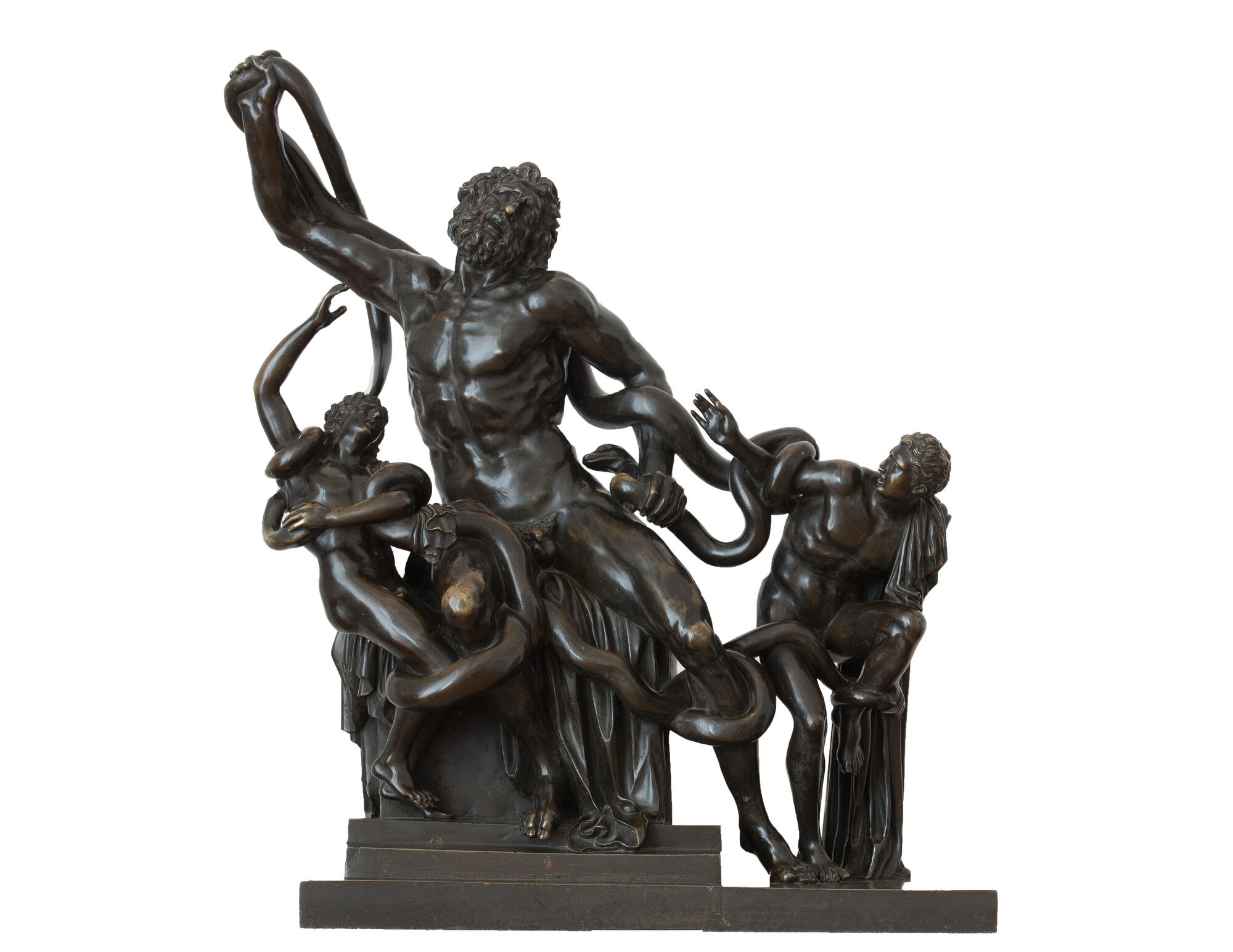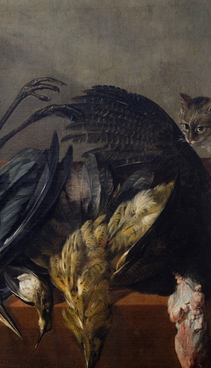The sculptural group ‘Laocoön and His Sons’ is a bronze copy of the 19th century. The Roman marble sculpture of the 1st century BC was unearthed on January 14th, 1506, in Felice De Fredis’s vineyard. It was attributed to Agesander, Athenodoros, and Polydorod of Rodes. Perhaps it was a copy of the lost Greek bronze statue of Pergamos.
The sculptural group depicting the scene of Laocoön and his sons being attacked by serpents presumably decorated the palace of Emperor Titus. During the Renaissance, this work produced the most robust resonance in creative circles and influenced the development of Renaissance art in Italy. The incredible dynamism and plasticity of the ancient work forms inspired many masters of the time, such as Michelangelo, Titian, El Greco, and Andrea del Sarto.
The heroes of the majestic sculptural group are the chief priest of Troy Laocoön and his sons. The plot refers us to the Trojan War, retold in “Aeneid” by Virgil. Laocoön foresaw the treachery of the Greeks who hid in the Trojan horse, he urged the inhabitants not to accept it, and uttered the famous line: “Beware of Greeks bearing gifts!” The goddess Athena patronized the Greeks in the Trojan War, enraged at Laocoön, and sent the serpents that destroyed him and his sons.
The “Laocoön” sculpture group expressively depicts the three heroes fighting with serpents. Each of them tries to escape. The son on the left slowly falls in anguish, having already experienced the power of the snake’s venom, but continues to fight. The son on the right is concerned about his father and brother’s fate, and as if he does not notice the deadly grip of the serpent rings tightly holding his leg. Energy and pathos reach the highest degree in the central figure of Laocoön. With muscles of the athletically beautiful body strained in pain, he tries to push the serpent away from his last might. Laocoön’s face expresses physical pain, sorrow for children, resentment, and rebuke for undeserved punishment. Pyramidal arrangement of figures, frieze composition, an excellent technique in depicting the body forms — all this means that it is a beautiful example of Greek art.
‘Laocoön’ appeared in the Tula Museum of Fine Arts collection from the collection of the Counts Bobrinsky from the estate in Bogoroditsk, a fine example of a cabinet bronze popular in the 19th century.
The sculptural group depicting the scene of Laocoön and his sons being attacked by serpents presumably decorated the palace of Emperor Titus. During the Renaissance, this work produced the most robust resonance in creative circles and influenced the development of Renaissance art in Italy. The incredible dynamism and plasticity of the ancient work forms inspired many masters of the time, such as Michelangelo, Titian, El Greco, and Andrea del Sarto.
The heroes of the majestic sculptural group are the chief priest of Troy Laocoön and his sons. The plot refers us to the Trojan War, retold in “Aeneid” by Virgil. Laocoön foresaw the treachery of the Greeks who hid in the Trojan horse, he urged the inhabitants not to accept it, and uttered the famous line: “Beware of Greeks bearing gifts!” The goddess Athena patronized the Greeks in the Trojan War, enraged at Laocoön, and sent the serpents that destroyed him and his sons.
The “Laocoön” sculpture group expressively depicts the three heroes fighting with serpents. Each of them tries to escape. The son on the left slowly falls in anguish, having already experienced the power of the snake’s venom, but continues to fight. The son on the right is concerned about his father and brother’s fate, and as if he does not notice the deadly grip of the serpent rings tightly holding his leg. Energy and pathos reach the highest degree in the central figure of Laocoön. With muscles of the athletically beautiful body strained in pain, he tries to push the serpent away from his last might. Laocoön’s face expresses physical pain, sorrow for children, resentment, and rebuke for undeserved punishment. Pyramidal arrangement of figures, frieze composition, an excellent technique in depicting the body forms — all this means that it is a beautiful example of Greek art.
‘Laocoön’ appeared in the Tula Museum of Fine Arts collection from the collection of the Counts Bobrinsky from the estate in Bogoroditsk, a fine example of a cabinet bronze popular in the 19th century.



